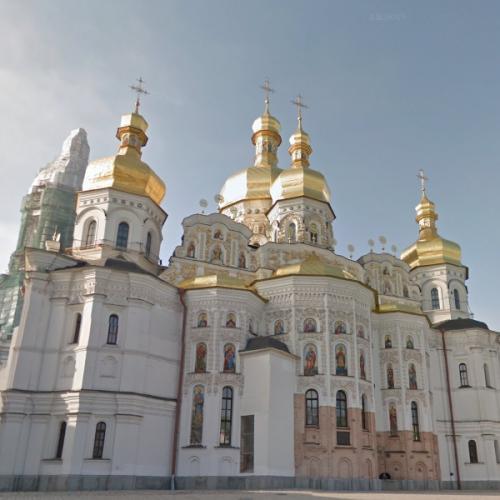The entire world has been watching events unfold in Ukraine these past two and a half weeks. Beautiful landmarks and historic sites are settings for unspeakable tragedy and human suffering.
Let’s take a few minutes to learn about the beauty and history of Ukraine, and find ways to help the people of this beautiful nation.
Kyiv Percheska Lavra
This beautiful Orthodox monastery is more than 1,200 years old, is a UNESCO World Heritage site. Monks established an order in the caves, creating catacombs, underground chapels, and other living spaces. Above ground, there is a cathedral, which was destroyed in World War II and rebuilt, a great bell tower, and some smaller churches.
The site is both a working religious monastery and pilgrimage destination, as well as a state museum.
Rodina Mat, Monument to the Motherland
The Motherland Monument was built after World War II when Ukraine was a Soviet republic. Controversial from the start, the 335-foot tall statue pays tribute to those who perished in defense of Kyiv and Ukraine.
It has strong Soviet and Russian overtones, and has become a mixed symbol in recent years as Ukraine has shifted ties toward democratic, western and European ideals. Nonetheless, it is a beautiful structure that stands guard over the capital city night after night of terrible bombing and shelling from Russians attempting to capture the city, and the country.
Kyiv TV Tower
Built in the Soviet era, the TV tower in central Kyiv, was a symbol of strength and was the tallest free-standing metal structure in the world until 2012, when the Tokyo Skyree was completed.
It was built on top of a Jewish cemetery, in problematic disregard for the interred underneath the structure. On March 1, a Russian missile struck the tower, cutting television communication to the residents of the city for hours, and killing five civilians.
Babi Yar Massacre Site
In 1941, Germans occupied Kyiv and rounded up the city’s Jewish population. More than 33,000 thousand Jews were shot between September 29-30 and buried in a ravine. Over the coming years, the occupying Germans would murder and bury countless others here, including Soviet soldiers, Roma, and other “undesirables”.
This site, sacred ground to many, is close to the TV tower, and was damaged by the bombing by Russian soldiers.
Independence Square
Kyiv’s central square, or maidan, has often been the gathering place for protests and social movements. In 2013, when the government rejected popularly-voted on moves for closer integration with Europe, people began protesting in the square.
Protests grew into an entire revolution emphasizing Ukraine’s desire to be more democratic, more aligned with Europe, and rejecting corruption by oligarchs and government leaders.
More than 100 people died in the revolution, now referred to as Euromaidan, or the Revolution of Dignity.
Monument of the Third Angel at Chernobyl
In 1986, the Chernobyl nuclear power plant experienced a catastrophic meltdown. The town was evacuated and is still nearly entirely abandoned. People can visit the grounds, but are not allowed to step off the guided paths.
Russian soldiers have taken over the power plant and international organizations are concerned about the risk to people at the site, and around Ukraine, if the plant is damaged.
There is a monument at Chernobyl of the Third Angel referred to in the Book of Revelation, which prophesied that a great explosion would rise up and cover the earth. The meaning of that monument is more appropriate now than ever.
Monument to the Founders of Odessa
One of the greatest cities in Ukraine was founded by Catherine the Great in 1794, and the port city has become an integral part of the culture and economy of Ukraine. A statue built in honor of Catherine and the other founders was erected in 1900, but dismantled under the Soviet regime.
It was reconstructed in 2007 in honor of the city’s history, and is now a major tourist destination.
Odessa Opera and Ballet Theater
The Odessa Opera and Ballet Theater is one of the city’s cultural treasures. The original structure was built in 1810, but burned down. It was rebuilt in 1887, and the new structure has a unique design that enhances acoustics. Even a whisper on the stage can be heard in any part of the theater.
These days, the theater is protected by sand bags and blockades as Russian soldiers may bear down on the city at any time. Performers even sang songs as they stacked bags to protect the iconic landmark from a potential invasion.
These are just a few sites in Ukraine that have been loved for years, seen by millions, and treasured by all. If you are interested in helping the people who have had to flee their homeland for safety, and able to donate, here are some links that have longstanding reputations of doing the most good.







